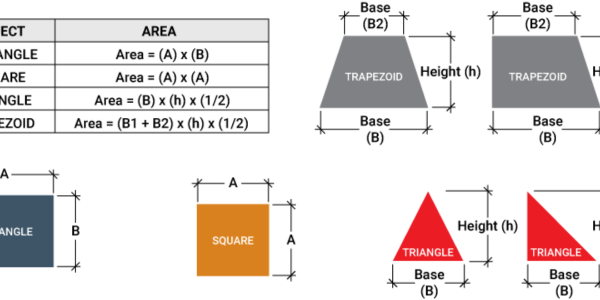Three methods for measuring a roof from the ground

By RoofScope.
Learn more about measurement techniques for accurate roof assessment.
This guide from RoofScope, part of Scope Technologies, provides insights for obtaining precise roof measurements without getting on a ladder. Generally a risky and time-consuming task that required you to get on the roof, taking roof measurements is now safer and more efficient with the following methods. Whether using a tape measure and calculator, satellite imagery or aerial measurement tools and software, this guide assists in determining the most suitable method for any project, as accurate measurements are crucial for effective roof repairs or replacements. Below is a comprehensive guide to learn how to measure a roof from the ground.
Method 1: Using a tape measure and calculator
Measure the building's perimeter
Start by walking around the building and measuring its length and width at ground level. Record these measurements for accuracy.
Calculate the roof slope
To determine the roof's pitch, measure the vertical rise over a 12-inch horizontal run. You can do this using a ladder to measure the rise or a smartphone app that measures angles.
Estimate the roof area
With your measurements in hand, calculate the roof area. Start by multiplying the length by the width to find the base area. Then, adjust for the roof's slope by applying the pitch factor.

Method 2: Use of satellite imagery
Access satellite images
Use online tools or services that provide satellite imagery of your property. These images can help you get a clearer view of the roof's dimensions.
Outline the roof
Using the satellite images, outline the roof's edges to determine its shape and size. Some services let you draw directly on the images to estimate measurements.
Calculate the area
After outlining, estimate the roof area, ensuring to account for any overhangs or additional structures.
Method 3: Aerial measurement tools and software
Leverage aerial imagery
Tools like RoofScope from Scope Technologies provide accurate aerial measurements remotely, reducing the need for physical inspections.
Automated measurements
Enter the property address into the software to generate detailed measurements. These tools often offer comprehensive reports that include dimensions, area calculations, and 3D models.
Verify and adjust
Ensure the aerial images are clear and unobstructed. You may want to verify the measurements by comparing them with other methods.
Conclusion
Ground-based roof measurement is a safer and more efficient alternative to traditional methods, providing accurate results without the risks associated with climbing onto the roof. Whether you prefer the simplicity of a tape measure and calculator, the convenience of satellite imagery, or the precision of aerial measurement tools like RoofScope, each method offers unique advantages. By selecting the right approach for your project, you can ensure that your roofing measurements are both reliable and easy to obtain.
Incorporating advanced tools like RoofScope into your workflow not only saves time but also enhances measurement accuracy, providing detailed reports useful for repairs, replacements, or new installations. As technology evolves, these innovative solutions are becoming increasingly essential for roofing professionals and homeowners alike.
Original article and images source: RoofScope
Learn more about RoofScope by Scope Technologies in their Coffee Shop Directory or visit www.roofscope.com.






















Comments
Leave a Reply
Have an account? Login to leave a comment!
Sign In